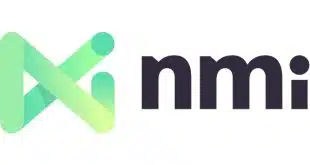As the U.S. payments system continues its migration to the Europay-MasterCard-Visa chip-card standard, companies like processor Fiserv Inc. are preparing services to help issuers with the effort.
Brookfield, Wis.-based Fiserv announced this week it is offering a suite of services to help with issuer strategies, personalization, transaction processing, risk management, and consumer and financial-institution education. Fiserv says it has not yet finalized pricing for the services. Fiserv also is working with numerous issuers, but declined to name them.
Both issuers and merchants face an October 2015 deadline from the major card networks to be prepared for EMV, a 20-year-old chip card standard already well established in the rest of the developed world. By that date, liability for counterfeit card fraud will shift to the party not equipped for EMV. Gas stations have until October 2017.
Fiserv’s Accel electronic funds transfer network is preparing, too. Accel supports the technology needed to process EMV debit transactions whether the cards carry a Visa Inc. or MasterCard Inc. brand.
Though the date for the liability shift is fixed, with no expectation it will move, issuers have some latitude when it comes to issuing chip cards, says David Keenan, Fiserv general manager of network solutions. Fiserv can help issuers determine how much of their card portfolios should receive chip cards and at which dates, he says. “We can help issuers determine the return on their EMV investments,” Keenan says.
Generally, chip cards, which also have a magnetic-stripe, cost about $3 each when produced in large quantities, Keenan says. A traditional magnetic stripe card may cost between 25 cents and 50 cents.
Another service is providing educational materials for financial institutions. Their staffs likely will field many questions from consumers about the new chip cards. Fiserv can provide marketing materials for consumers and bank staff, he says. “The cardholder experience is very different in the chip world,” Keenan says. In addition to learning to dip the payment card into a point-of-sale terminal, consumers will have to contend with knowing which cardholder verification method—chip-and-PIN or chip and signature—their bank uses.
Educational materials will be in high demand as chip cards arrive in consumer homes, says Julie Conroy, a senior analyst at Boston-based Aite Group LLC who is following the U.S. EMV conversion.
“We are the largest card market to go EMV and the most fragmented,” Conroy says. And the United States is the only country to have dueling cardholder verification methods, she notes. That’ll require a lot of cardholder education, compounded by issuers requiring one or the other of the two verification methods, she says. “There’s going to be a lot of education.”
Competing processor Fidelity National Information Services Inc. (FIS) also announced this week an EMV instant issuing service called FIS Instant Card that enables financial institutions to print cards at a branch.



